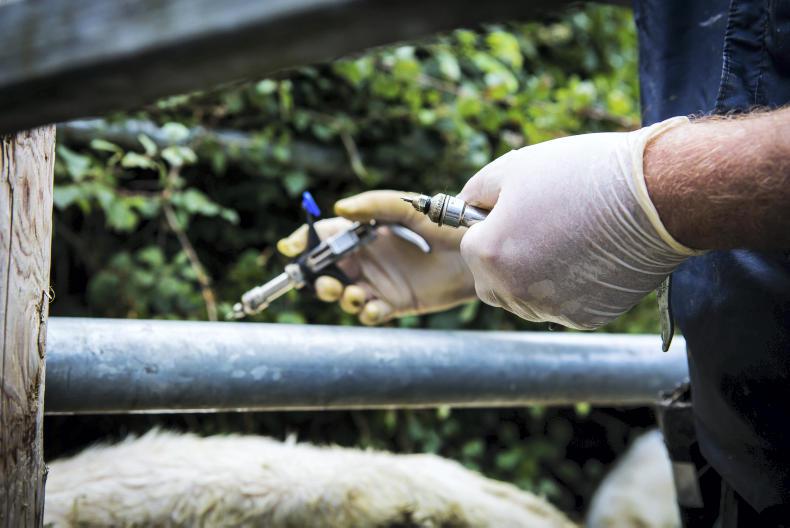The number of cattle condemned as TB reactors surged by almost 40% in 2020 compared to previous years.
Farmers in the Republic of Ireland lost over 23,000 cattle to TB last year, provisional figures from the Department of Agriculture show. That’s compared to an average of 16,800 for the previous five years.
It is the first time more than 20,000 reactors have been detected in over a decade.
The provisional 2020 figures for TB incidence underline the deterioration in the levels of bovine TB in the country.
Of all herds tested last year, 4.3% had at least one reactor, the highest TB incidence rate since 2010 and a marked increase on 2019’s rate of 3.72%. A total of 4,624 farms were locked up with TB last year.
Significant rises
Munster and the northeast have seen the most significant rises in TB-positive animals.
In north Cork, over 3,000 reactors were identified, the highest of any county and a 50% increase on 2019. A further 941 reactors were identified in south Cork.
In the south of Tipperary, the number of reactors has exploded, increasing by over 200% from 377 in 2019 to 1,154 last year. The north of the county has suffered too, with reactors climbing to 1,390.
The number of TB-positive animals in Limerick doubled to almost 750 while 1,200 TB positive cattle were identified in Kerry. In Clare, over 1,500 cattle were condemned.
In the northeast, farmers in Cavan are now the worst affected with 1,253 reactors identified, climbing above Monaghan where 1,189 cattle tested positive. Numbers have shot up in neighbouring Meath from a 10-year low of 555 reactors to 1,017.
In 2020 there were 12,852 reactors taken at TB tests in NI, which is down only slightly
The situation also spiralled in Westmeath, where twice as many cattle contracted TB, with 1,210 reactors identified. While TB rates are up in the Republic of Ireland, they are still only around half of those seen in Northern Ireland (NI).
In 2020 there were 12,852 reactors taken at TB tests in NI, which is down only slightly on the 13,019 from 2019.
Herd incidence (defined in NI as the number of new reactor herds as a proportion of those that tested) in 2020 stood at 8.44%.
TB spend edges towards €100m
Almost €100m was spent on Ireland’s TB eradication programme in 2020, Minister for Agriculture Charlie McConalogue has revealed.
TB testing cost almost €37.3m last year, with farmers paying €27.4m of this and the Department of Agriculture picking up the remaining €9.9m.
Including compensation and other costs, the total cost of the TB programme last year came to €98.5m, of which farmers paid €35.1m. EU funding accounted for just over €5.4m, a €2m drop.
Read more
TB situation ‘dire’ for farmers and taxpayers – McConalogue
Rising TB costs force Department’s hand on further action
The number of cattle condemned as TB reactors surged by almost 40% in 2020 compared to previous years.
Farmers in the Republic of Ireland lost over 23,000 cattle to TB last year, provisional figures from the Department of Agriculture show. That’s compared to an average of 16,800 for the previous five years.
It is the first time more than 20,000 reactors have been detected in over a decade.
The provisional 2020 figures for TB incidence underline the deterioration in the levels of bovine TB in the country.
Of all herds tested last year, 4.3% had at least one reactor, the highest TB incidence rate since 2010 and a marked increase on 2019’s rate of 3.72%. A total of 4,624 farms were locked up with TB last year.
Significant rises
Munster and the northeast have seen the most significant rises in TB-positive animals.
In north Cork, over 3,000 reactors were identified, the highest of any county and a 50% increase on 2019. A further 941 reactors were identified in south Cork.
In the south of Tipperary, the number of reactors has exploded, increasing by over 200% from 377 in 2019 to 1,154 last year. The north of the county has suffered too, with reactors climbing to 1,390.
The number of TB-positive animals in Limerick doubled to almost 750 while 1,200 TB positive cattle were identified in Kerry. In Clare, over 1,500 cattle were condemned.
In the northeast, farmers in Cavan are now the worst affected with 1,253 reactors identified, climbing above Monaghan where 1,189 cattle tested positive. Numbers have shot up in neighbouring Meath from a 10-year low of 555 reactors to 1,017.
In 2020 there were 12,852 reactors taken at TB tests in NI, which is down only slightly
The situation also spiralled in Westmeath, where twice as many cattle contracted TB, with 1,210 reactors identified. While TB rates are up in the Republic of Ireland, they are still only around half of those seen in Northern Ireland (NI).
In 2020 there were 12,852 reactors taken at TB tests in NI, which is down only slightly on the 13,019 from 2019.
Herd incidence (defined in NI as the number of new reactor herds as a proportion of those that tested) in 2020 stood at 8.44%.
TB spend edges towards €100m
Almost €100m was spent on Ireland’s TB eradication programme in 2020, Minister for Agriculture Charlie McConalogue has revealed.
TB testing cost almost €37.3m last year, with farmers paying €27.4m of this and the Department of Agriculture picking up the remaining €9.9m.
Including compensation and other costs, the total cost of the TB programme last year came to €98.5m, of which farmers paid €35.1m. EU funding accounted for just over €5.4m, a €2m drop.
Read more
TB situation ‘dire’ for farmers and taxpayers – McConalogue
Rising TB costs force Department’s hand on further action






 This is a subscriber-only article
This is a subscriber-only article










SHARING OPTIONS: